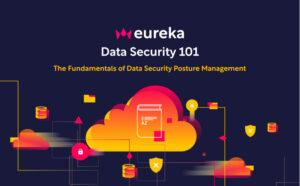
Mastering the Art of Metal Trading – Top Strategies for Success
l analysis to make informed trading decisions. This method uses insight from market psychology, behavioural economics and quantitative analysis to predict price movements. It also unpicks visual data, such as candlestick graphs and trend lines. This will enable you to better understand your chosen market and enhance your trading performance.
Many of the same money management fundamentals that apply to forex trading are applicable to metals, so if you have a solid risk/reward set up with your forex account it should carry over to your precious metals account. Our prop trader suggests adjusting your Take Profit and Stop Loss levels for the specifics of each metal, but overall your methodology should remain the same. Sentiment indicators play a smaller role with metals than they do with forex, as the ratios tend to correct themselves rather than send out signals that need interpreting.
2. Stay Disciplined
One of the most difficult aspects of trading is learning to discipline yourself. This doesn’t just mean creating a plan to stick with and studying hard, but also taking the time out of your day for rest and relaxation.
Being disciplined means that you don’t allow your emotions or the highs and lows of the markets to sway your trading decisions. Traders who lack discipline tend to make more mistakes, lose money, and fail to build long-term success.
Developing the right level of self-discipline will help you stay on track in the metal market, regardless of what happens around you. To do this, it’s essential to have a clear, realistic goal in mind. A good place to start is by reading the book “The One Thing,” which teaches you how to eliminate distractions and focus on what matters most to you.
A robust trading plan should be created, outlining your expected returns, how you’ll approach the market under different circumstances, and the maximum amount of funds that you can risk per trade. It’s important to religiously follow this plan, despite any emerging circumstances.
3. Establish Take-Profit Points
When it comes to investing in metals, investors can choose from a variety of options on modern stock and commodity exchanges. These include ETFs and futures contracts, in addition to physical purchases of precious metals.
Precious metals are the rarer, more lustrous elements of the periodic table, including silver (Ag), gold (Au), platinum (Pt) and palladium (Pd). These natural metallic chemical compounds are used for a wide range of purposes, from jewelry to art to coins, dental work and electronics. Unlike the more common industrial metals, they do not corrode or oxidize easily.
Metals are a popular trading asset class and many market participants consider them to be a traditional safe-haven investment. As such, they can be a great diversifier in an investment portfolio or hedging strategy. FP Markets offers traders the chance to trade precious metals CFDs, which give them exposure to the market without owning any physical metal. This is a much more cost-effective way to invest in the market, which also helps to mitigate risks.
4. Stay Up-To-Date
Metals trading is gaining popularity among investors and traders seeking to diversify their financial holdings. They are considered safe-haven assets during economic uncertainty and are less vulnerable to market volatility than stocks or other investments.
Aside from the purchase and sale of physical metals, commodity traders assume specific risks like exchange rate and pricing volatility. They also hedge their exposures through derivative contracts, traded on metal exchanges. Their business is capital intensive and they generate additional income through services like inspection, quality control, and logistics (including shipping and distribution). They often own loading terminals or even their own fleets of ships and take stakes in local forwarders and fuel suppliers.
The major global metal trading centres are based in Switzerland and London. The largest of these are private companies, such as Glencore and Trafigura. Their reticence to disclose provenance information and production conditions poses a risk for German companies sourcing their metals via these traders in the event of human rights violations and environmental pollution. Peak’s energy and metals research helps you stay ahead of the curve with actionable daily market analysis bulletins focusing on seasonal price trends, macroeconomic drivers, hedge fund positioning, and momentum trader flows.
5. Be Flexible
Precious metals are a very diverse group of commodities. Historically, they have served as both currency and jewellery, and today, they are used in electronic devices and industrial processes. Known for their unique properties, precious metals are often traded as CFDs (Contracts for Difference).
While trend following strategies remain the best way to trade according to research, traders can also implement reversal methods to create a more balanced portfolio. However, it’s important to be aware that these strategies can lead to higher drawdowns than those of a pure trend following strategy.
In terms of money management, the same principles that apply to forex trading can be applied to metals, including the usual journaling and backtesting methodology, as well as leverage set up. In addition, it’s important to note that metals tend to have a different time schedule than the forex market and should be considered as such when preparing your strategy. Sentiment indicators also play a lesser role than in forex and should only be used as confirmation of the momentum you see on your charts.


